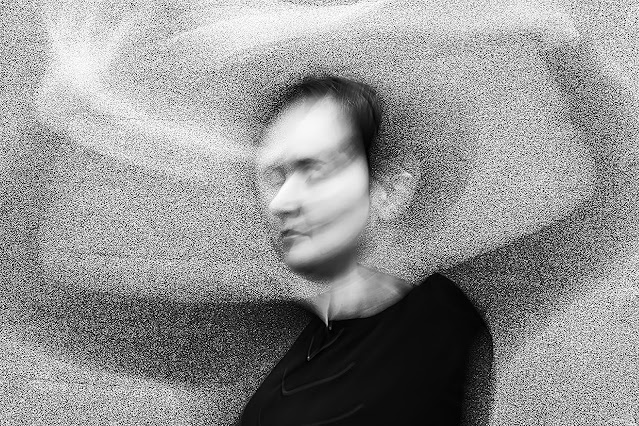Their stories, our collections; how sifting through 850,000 museum objects with the community will inform our new Body Image gallery
Birmingham Museum and Art Gallery (BMAG) is undergoing a process
of redeveloping all of the permanent storylines currently displayed in its
galleries. This is a part of the museum’s new development plans to make BMAG
the Museum for Birmingham. Currently our interpretation of storyline regarding
Body Image will centre on the question:
How are individual identities created by
viewing one’s own body in the context of a wider world?
The plan is to look critically at the representation
of the human form in public spaces as evidenced by museum's permanent collection.
The enquiry would look at: who created these depictions, for what purpose and
what the legacies of these sorts of images have today. Through the museum’s
collection we are able to explore these ideas through objects created for
children and vulnerable people; objects used for advertisements; objects used
for, and depictions of, purposeful body alterations; as well as historical and
contemporary critiques and expressions of beauty and identity in art.
 |
Birth Certificate for Barbara Cynthia
Templeton, 1908
|
We are also able to
see that certain aspects of the body, such as hair and skin can be interrogated in
detail, to explore intersectional narratives around identity, society and the
human body. This includes cross-cultural interrogations of the value and power
associated with human hair, its use to represent a person’s spirit, or an
individual relationship to faith or an interrogation of gender roles and beauty
ideals.
This story could be explored through British Victorian mourning rings, or necklaces of human hair from Fiji, and hair dye from Birmingham.
While explorations
around our relationship to our skin can be used to explore issues to do with
race, health and beauty; artworks by the late Donald Rodney and his fight with
Sickle cell emerge as exemplary starting points for these discussions. |
| Mourning Ring (copyright of Birmingham Museums Trust) |
 |
| Necklace with human hair (Fiji) (copyright of Birmingham Museums Trust) |
 |
‘In
the House of My Father’ by Donald Rodney (copyright of the artist's estate)
|
The exhibition
itself will be placed within the Story LAB. This space was specifically
designed to be a modular, interchangeable testing space; a space to try out
methodologies of engagement, exploring how we might co-create or collaborate on
proposed new ‘storylines’ for the museum. By definition, our previous version
of the Story LAB involved a fast passed co-creative process, one in which we
gave over much of the editorial museum authority to our co-curators.
The co-curation
process was most evident in the tone of the gallery space, directed and
confrontational about difficult subject matter. In the latest version of Story
LAB, our collaborative approach leans towards using a theme to develop an
overriding story or angle over a greater amount of time, informing object
selection that is contextualised and reflective of the story the group want to
tell. We are approaching this project with questions that we believe will exist
as an anchor point for the interrogation and critical analysis of our museum
practice. Predominantly, we are questioning; how might we build a collaborative single narrative around the theme of
body image, reflective of our city's people? One that is narrow enough to feel
refined, yet open enough to leave space for subjectivity, curiosity and
learning.
There are over
850,000 objects in the Museum Collections Centre, many of which relate to
cultures that exist across the world, others appear to be familiar and
everyday items such as hair dye and dolls. In both instances these objects are
able to contribute to stories about the human body and our relationship to it, in
a way that is relevant to the heritage and cultural history of our local
communities. Those stories we believe will in turn reflect and resonate
Birmingham’s shared connection to the world, through its people and subsequently in the objects they select for
exhibition. It could only take one object with a multitude of interpretative
methods to tell the story our collaborators decide reflects Birmingham most. For
us, that is the exciting part of working in this way.
We will keep a blog
about our progress which will launch on the 19th Feb, along with our
online #editaddict campaign to encourage further engagement with our project
and collections. If you’re interested in ideas around filtering and editing
with technology, check out the BMAG blog and Story LAB Instagram page. There
you can find out what we’re doing with our Pre-Raphaelite paintings…
Instagram: storylab.bm_ag
Hannah Graham (Community Engagement Officer, Museum for Birmingham) and Rachael Minott (Research Assistant, Body Image and Identity (Story Lab))
Hannah Graham (Community Engagement Officer, Museum for Birmingham) and Rachael Minott (Research Assistant, Body Image and Identity (Story Lab))
About Birmingham Museums Trust
Birmingham Museum & Art Gallery is operated by Birmingham Museums
Trust, an independent charity that manages the city’s museum collection and
venues on behalf of Birmingham City Council. It uses the collection of
around 1,000,000 objects to provide a wide range of arts, cultural and
historical experiences, events and activities that deliver accessible learning,
creativity and enjoyment for citizens and visitors to the city.
The collection is one of the three great civic collections of the UK,
reflecting the city’s historic and continuing position as a major international
centre for manufacturing, commerce, education and culture. Most areas of the
collection are designated as being of national importance, including the finest
public collection of Pre-Raphaelite art in the world.
Attracting over one million visits a year, the Trust’s venues include
Aston Hall, Birmingham Museum & Art Gallery, Blakesley Hall, Museum
Collections Centre, Museum of the Jewellery Quarter, Sarehole Mill, Soho House,
Thinktank and Weoley Castle. birminghammuseums.org.uk



Comments
Post a Comment